Gruppo nastri uscita rifili
Pulsar: specialista in sistemi di movimentazione
Trim outfeed conveyor unit




Pulsar: specialist in handling systems
Settore Tissue Tissue Industry


Pulsar: specialista in sistemi di movimentazione




Pulsar: specialist in handling systems

Il gruppo nastri uscita rifili è costituito da uno o più nastri a tappeto che trasportano i rifili prodotti dal troncatore.
Per ogni log tagliato vengono scartati due rifili uno all’inizio e uno alla fine. I rifili sono lasciati cadere per gravità dal trimex che trasporta i rotoli all’uscita del troncatore.
La zona di carico del primo nastro a tappeto viene posizionata quindi alla fine del trasporto a facchini del troncatore sotto il trimex aspirato. L’uscita del primo trasporto può essere o sul fronte del troncatore (sotto l’uscita rotoli) o laterale in funzione delle esigenze e degli ingombri del troncatore.
I rifili trasportati all’esterno del troncatore possono essere scaricati su un altro trasporto o in prossimità del gruppo aspirazione rifili.
Nel caso sia presente un REDS da troncatore è necessario scaricare i rifili lateralmente. Nel caso di due troncatori paralleli è possibile raccogliere i rifili di entrambi i troncatori su un unica linea.
A. Nastro rifili frontale da 1 troncatore
B. Nastro rifili da 2 troncatori
C. Nastro rifili laterale da 1 troncatore con REDS
D. Nastro rifili aerei
I nastri rifili sono costituiti da nastri a tappeto con larghezza della tela di 600 mm. Le guide di contenimento laterali sono ricavate da lamiere sagomate per agevolare il carico e lo scarico del rifili. Per i nastri inclinati si utilizzano tele con profili trasversali (facchini).
The tim outfeed conveyor unit it is made up of one or more belt conveyors that transport the trims produced by the log-saw. For each log cut, two trims, one on either end, are discarded. The trims are left to fall for gravity by the Trimex that transports the rolls to the log-saw outfeed.
The first conveyor belt loading zone is then positioned at the end of the flight conveyor under the Trimex. First conveyor outfeed can be on the front of the log-saw (under the roll outfeed) or at the side, depending on the requirements and log-saw overall dimensions.
Trims transported outside the log-saw can be unloaded on another conveyor or near the trim suction unit.
If a REDS divider coupled to the logsaw is present, the trims shall be unloaded at the side. If there are two parallel log-saws, it is possible to collect the trims from both log-saws on one line.
A. Frontal trim conveyor from 1 log-saw
B. Trim conveyor from 2 log-saws
C. Lateral trim conveyor from 1 log-saw with a reds divider
D. Overhead trim conveyor
The trim conveyors are made up of conveyor belts with a belt width of 600 mm. The lateral containment guides are made of shaped sheet steel to facilitate trim loading and unloading. Inclined conveyors use belts with crosswise profiles (flights).

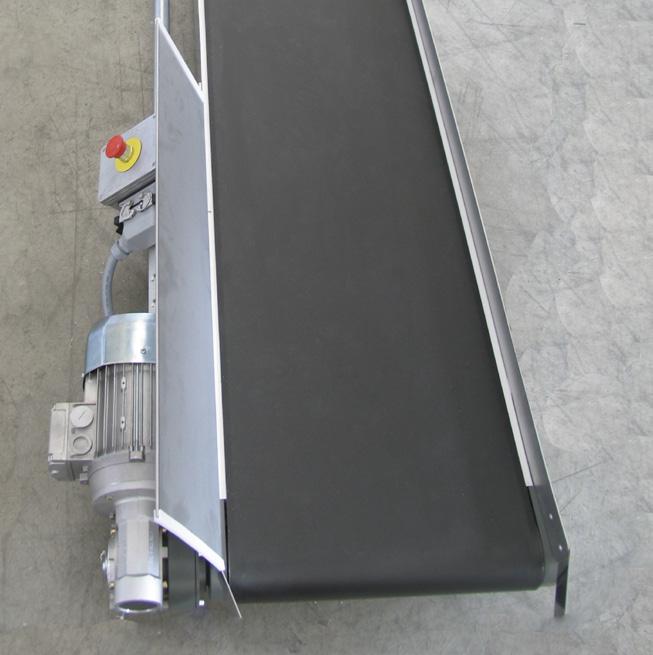

E’ costituito da uno o più nastri a catena modulare che trasportano i rifili prodotti dal troncatore.
Per ogni log tagliato vengono scartati due rifili uno all’inizio e uno alla fine. I rifili sono lasciati cadere per gravità all’uscita del troncatore.
L’uscita del primo trasporto può essere o sul fronte del troncatore (sotto l’uscita rotoli) o laterale in funzione delle esigenze e degli ingombri del troncatore.
I rifili trasportati all’esterno del troncatore possono essere scaricati su un altro trasporto o in prossimità del gruppo aspirazione rifili.
Nel caso sia presente un REDS da troncatore è necessario scaricare i rifili lateralmente o integrare il nastro dei rifili all’interno del REDS. Nel caso di due troncatori paralleli è possibile raccogliere i rifili di entrambi i troncatori su un unica linea.
I trasporti a rifili sono realizzati con percorsi a catena modulare con larghezza 232 mm o 383 mm con facchini a passo di circa 300-500 mm in funzione della produzione e della dimensione dei rifili da trasportare.
Le guide di contenimento laterali sono ricavate da lamiere sagomate per contenere i rifili e agevolare il carico e lo scarico degli stessi.
Il gruppo è protetto superiormente ed inferiormente con carter antiinfortunistici.
Cassetta elettrica indipendente con Inverter, pulsanti start stop e circuito di emergenza.
It is composed by one or more modular chain conveyors which convey trims coming out of the logsaw.
For each log cut two trims are discarded, one at the beginning and one at the end. The trims falls for gravity at the logsaw outfeed.
The outfeed of the first conveyor can be either on the front of the logsaw (under the roll outfeed) or on the side depending on requirements and on the logsaw footprint. The trims conveyed outside the logsaw can be discharged onto another conveyor or close to the trim suction system. With the presence of a REDS coupled to the logsaw it is necessary to discharge the trims on the side or to integrate the trim conveyor into the REDS. With two parallel logsaws it is possible to collect the trims coming from both into one single line.

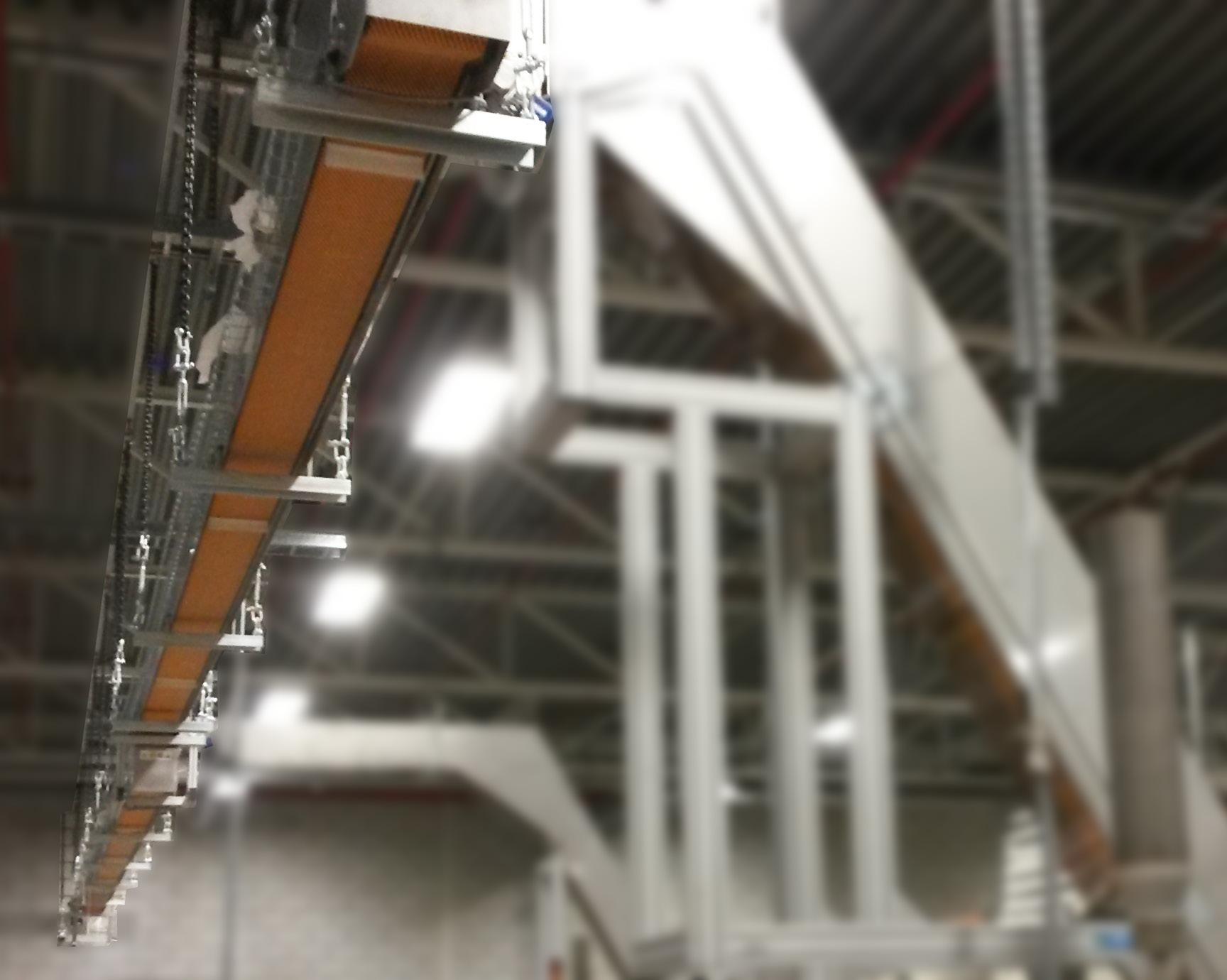
The modular chain used can be 232 mm or 383mm wide, with cleats with pitch of about 300-500 mm according to production and trim dimensions.
The side containment guides are shaped metal sheets which contain the trims and facilitate the loading and discharging of the trims.
The unit is equipped with upper and lower safety guards.
Independent electric cabinet with inverter, start/stop push buttons and emergency circuit.
Elevatori rifili da 2 troncatori Trim elevator with 2 log-saws
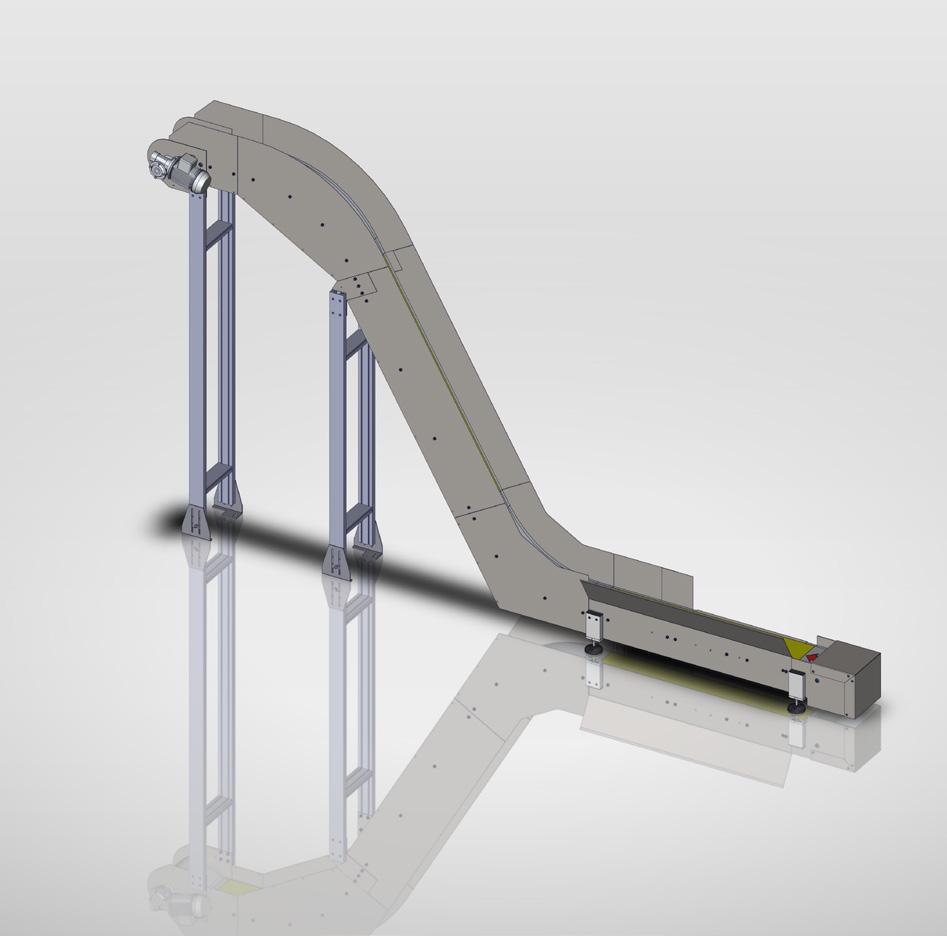
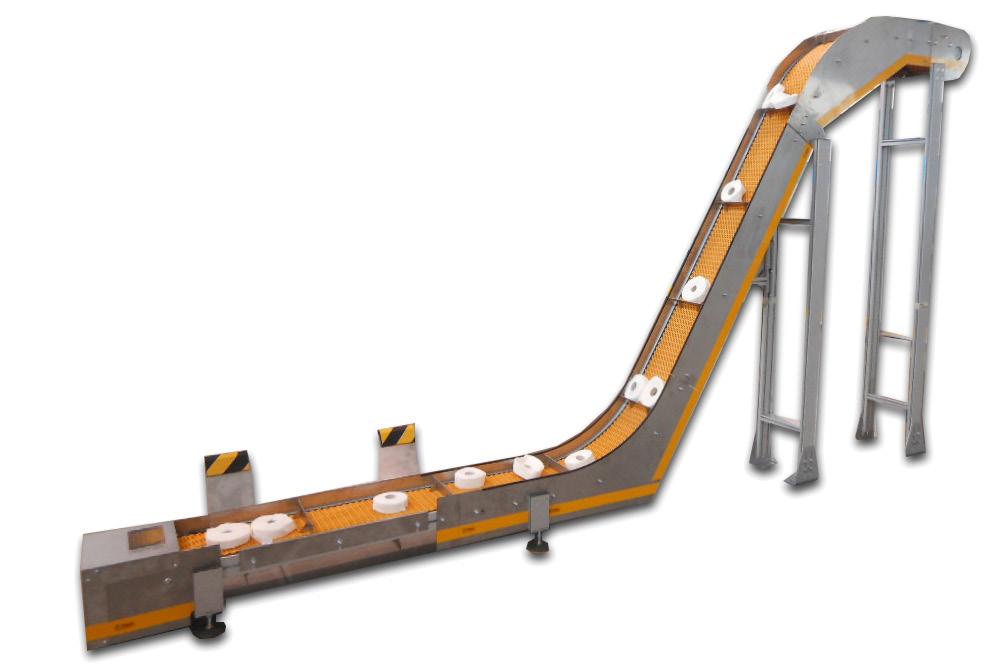
TRAMOGGIA DI SCARICO (OPZIONALE) DISCARD CHUTE (OPTIONAL)
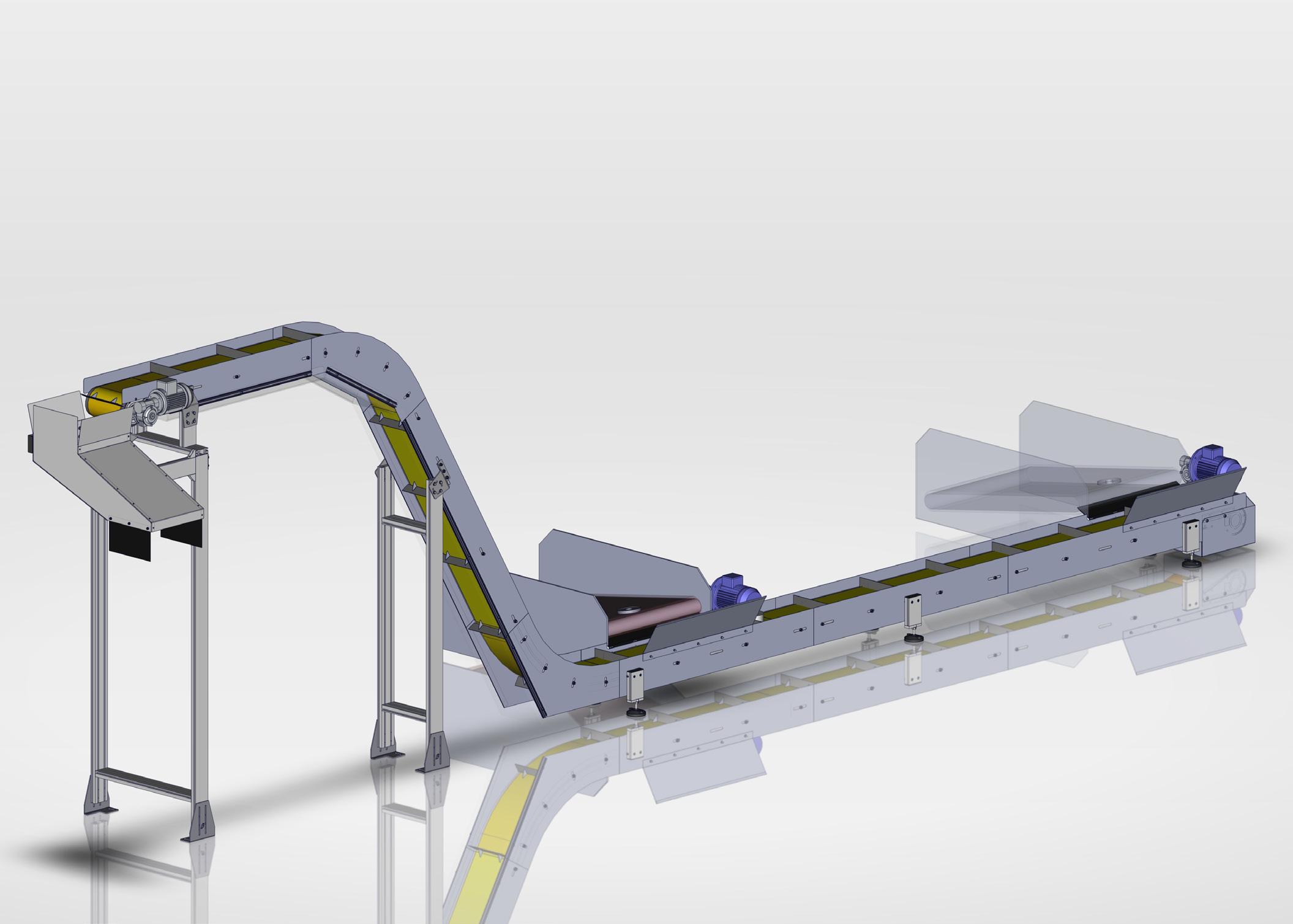
Pulsar Engineering Srl Via Marino Serenari, 29 40013 Castel Maggiore BO - Italy Tel. +39.051.6323011 Fax +39.051.6323050 info@pulsarengineering.com www.pulsarengineering.com
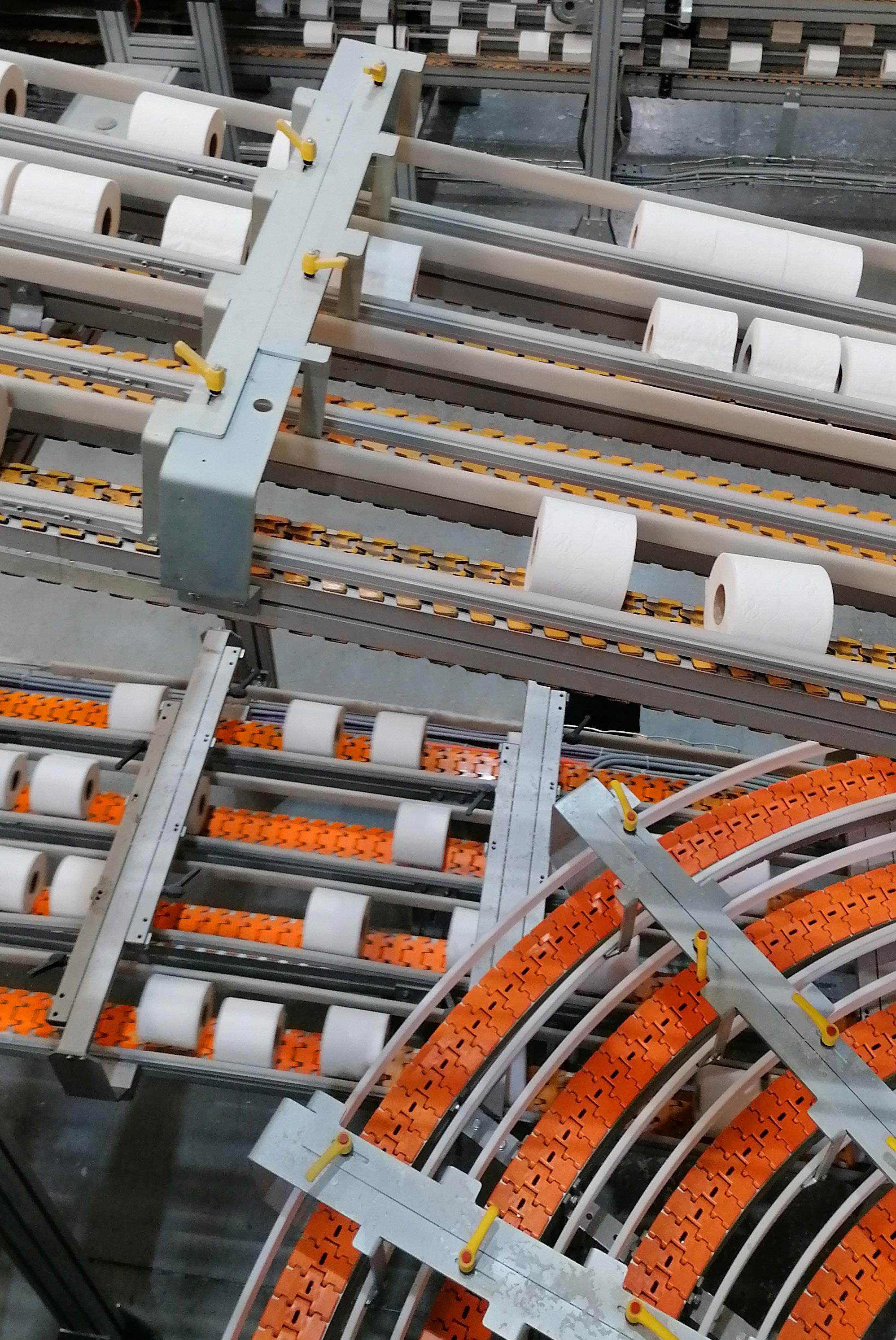

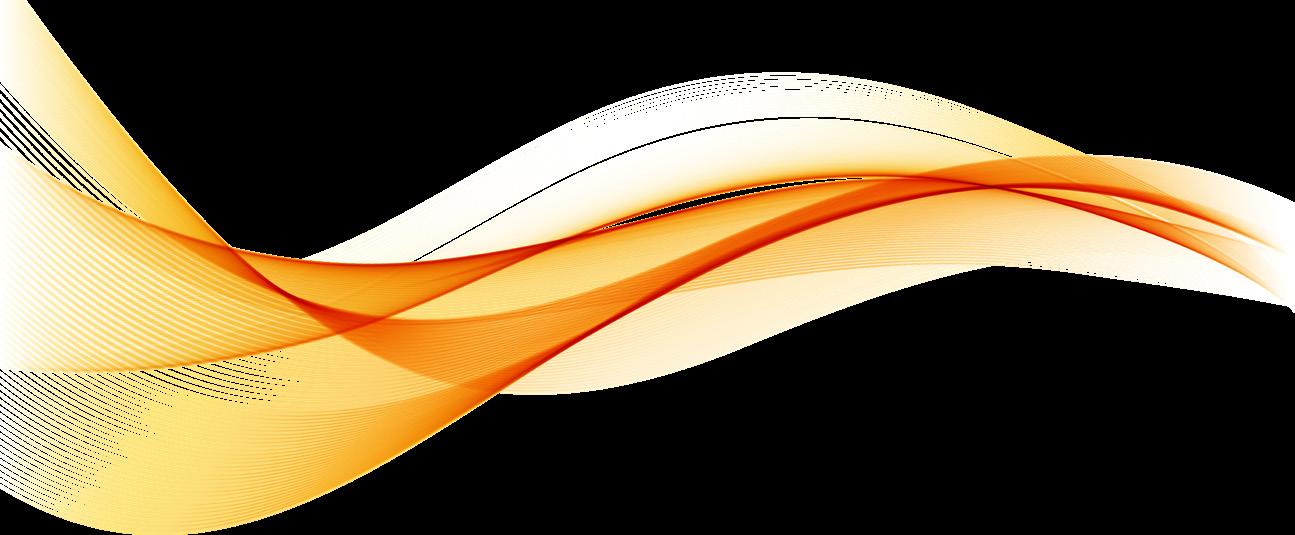
Pulsar America Inc. 975 Parkview Rd (Suite 15) Green Bay, WI 54304 Phone +1 (920) 425 4078 Fax +1 (920) 221 0076 info@pulsaramerica.com www.pulsaramerica.com
Pulsar Shanghai Address 2F, Building #11 No. 988 Zhongchun Road Minhang District, Shanghai, Cina info@pulsarshanghai.cn www.pulsarshanghai.cn Tel: +86 21 60933799 Mobile: +86 13818391101 info@pulsarshanghai.cn www.pulsarshanghai.cn